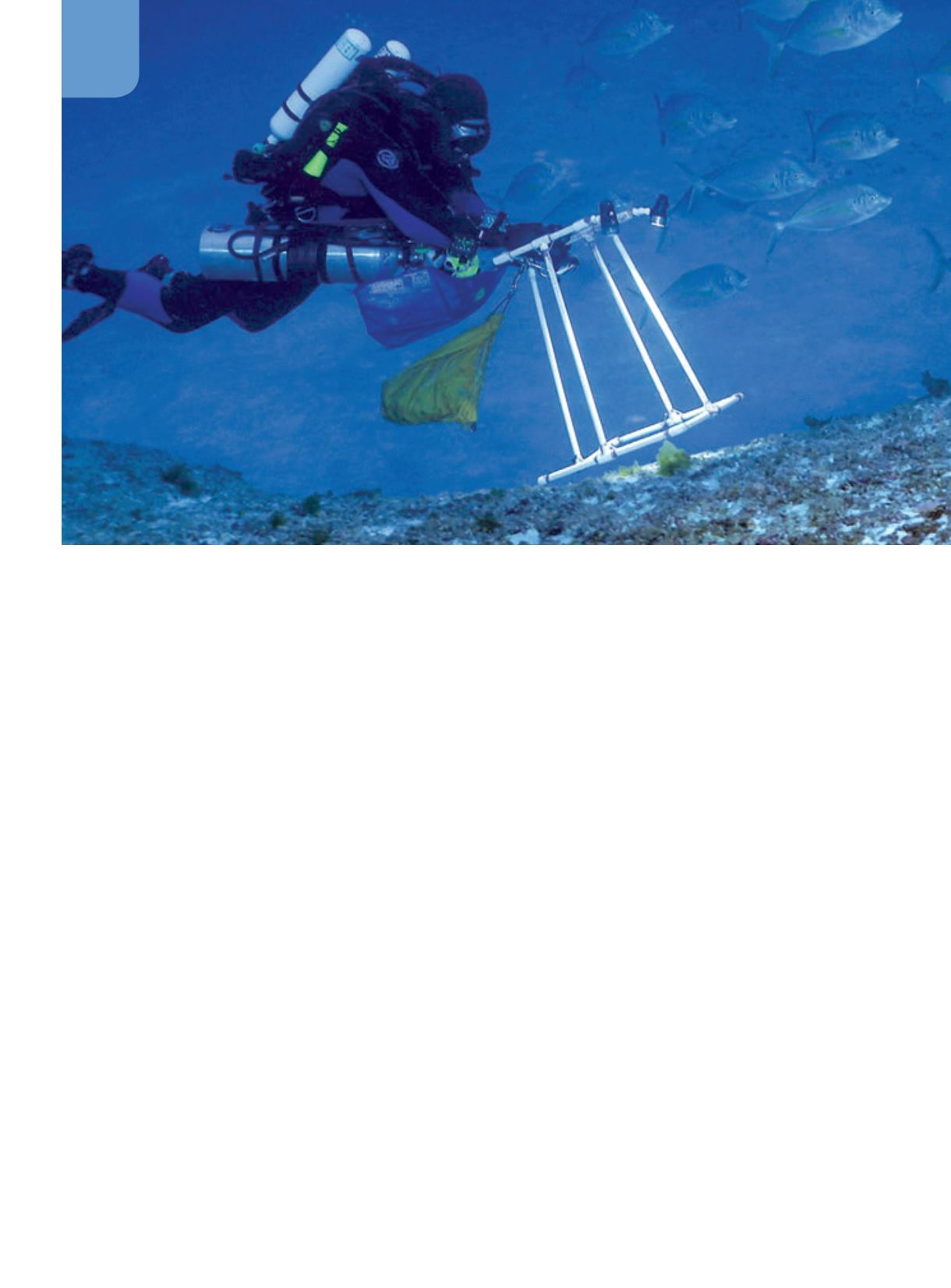

22
|
WINTER 2017
DIVE SLATE
DEEP STUDY
STUDYING DEEP REEFS
AND DEEP DIVERS
By Payal S. Razdan, MPH, EMT
NOAA rebreather diver
Brian Hauk photographically
documents benthic algae
and coral.
P
apahānaumokuākea Marine National
Monument (PMNM) in the
Northwestern Hawaiian Islands is the
largest marine conservation area in the
United States and one of the largest
in the world. Its atolls, islands, reefs,
pinnacles and surrounding habitats make up one of the
last expansive wild places on Earth.
Until recently, coral reef research has focused on
the shallowest one-third of reef habitat, leaving deeper
regions mostly unexplored. As a result, many species
have remained unidentified or even undiscovered. But
as coral reefs continue to be threatened, supporting
habitat and species diversity is increasingly critical. The
National Oceanic and Atmospheric Administration
(NOAA) recognizes that extensive exploration of
these reef systems is integral to understanding the
contributions of Hawaii
’
s reefs to overall global
biodiversity. Scuba diving operations are a necessary
element of this exploration, but the long-term
physiological impacts of these deep dive exposures are
not completely understood. Divers must rely on dive
computers, mathematical models and decompression
algorithms that have undergone only limited testing on
humans. As a result, significant gaps in knowledge exist.
Studying the biodiversity of the Hawaiian archipelago
using scuba has given scientists a unique opportunity
to monitor the physiological impacts of deep dives
and thus expand our knowledge of diving science,
particularly decompression risk.
THE DIVERS AND EQUIPMENT
The deeper regions are of particular interest because of
the potential protection and support they provide for
shallow reef systems during and following environmental
disturbances.
1
Mesophotic (
meso
meaning middle,
photic
meaning light) coral ecosystems, found in tropical and
subtropical regions from about 100 feet to 500 feet,
are extensions of shallower coral environments. Reef-
building corals in Hawaii have been recorded as deep
as 500 feet. These reefs had never been explored prior
to the commissioning of the NOAA ship
Hi’ialakai
,
which has conducted mesophotic research cruises for
six years now.
While remotely operated vehicles (ROVs) and
submersibles can be used at these depths, they have


















